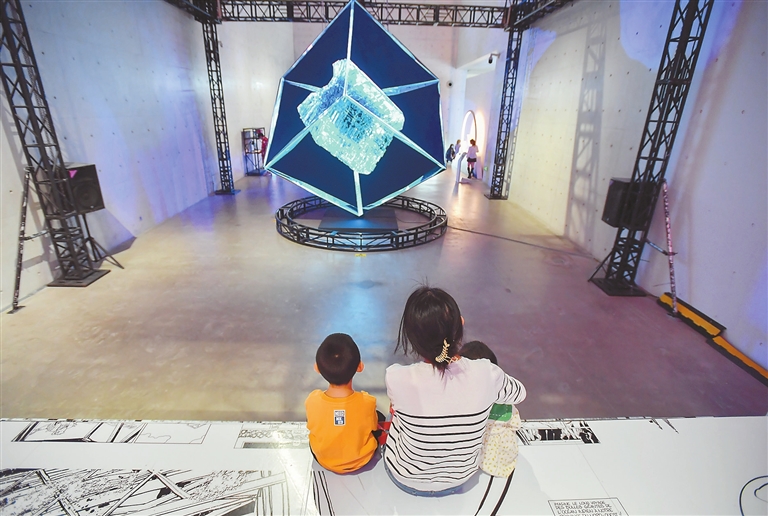
THOUSANDS of cutting-edge equipment, including intelligent quantum computers 550A and 550C, anti-drone guns, nuclear weapon keys, and triggers, pile up in Yang Xu’s room. These are not lethal weapons but full-scale models that starred in China’s latest sci-fi blockbuster, “The Wandering Earth II.” Since being released Jan. 22, the Chinese sci-fi action-thriller has earned a box office of over 3.4 billion yuan (about US$500 million). Over 50 million watched it in theaters, according to box office tracker Maoyan. The movie was praised for its imaginative plot and its exquisite props. In Shenzhen, South China’s Guangdong Province, designer Yang and his team created over 1,000 props for the movie. The designing and manufacturing of necessary props for sci-fi films are backed by complete, complex, and precise industrial processes, said Yang. Starting with conceptual design and structural modeling, gadgets and gizmos are indispensable in every step, from numerical control programming, machining, post-polishing and spray-painting, laser carving, to surface treatment. Yang previously worked with conceptual cars and then began to set foot in the film industry. In 2020, he moved from Beijing to Shenzhen, set up his studio and factory, and focused on conceptual design and prop production for films. As “The Wandering Earth II” started shooting in late 2021, Yang devoted himself to designing and producing props for the movie. The schedule was tight for the prop production team. It only took 20 days for Yang and his team to bring the anti-drone guns from a blueprint to the shooting scene. All part and service suppliers for the movie props are within 10 km of the studio in Shenzhen, giving the team much confidence and ensuring that the manufacturing process and product quality are controllable. The computer numerical-control method was applied in manufacturing to ensure the props look realistic. Yang and his team worked meticulously to ensure the triggers function well, the batteries could be removed and loaded, and the Picatinny rails were installed correctly. Multiple types of computer numerical control tools were applied to better display the texture of the irregular metal shell of the intelligent quantum computer 550A. “The devil is in the details,” said Yang. High-tech companies from many parts of the country offered various props for the movie. The drivable and deformable operation machines were produced by the Xuzhou Construction Machinery Group Co., Ltd. in Jiangsu Province. The exoskeleton robots were made in Shanghai. Cameras with AI functions came from Zhejiang Province. The exoskeleton robots cast in the movie were offered by ULS Robotics. By offering extra power to the wearer’s waist, they helped the actors lift a bag of sand of 30 kg without much effort. Many of the props also have wider market potential. Guo Fan, director of “The Wandering Earth II,” said that some specific props in the movie reached commercial-use levels. Yang is now planning to produce film peripheral products. He is determined to tap into China’s growing industrial manufacturing power to create more realistic props and products.(Xinhua) | 
